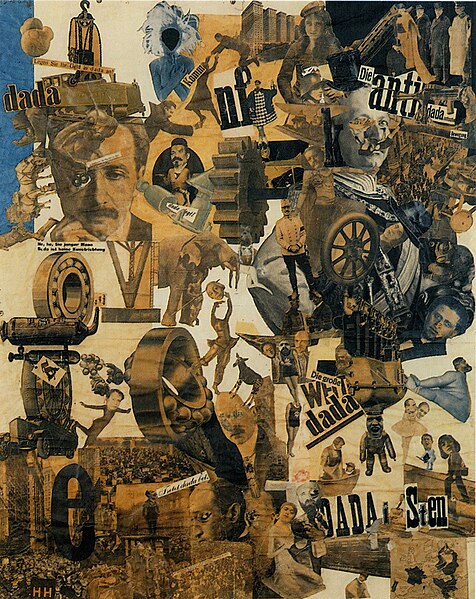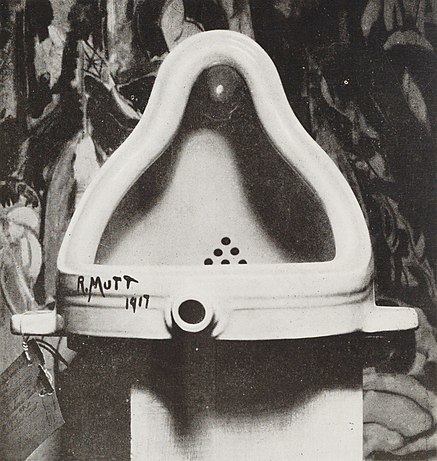DADA
Dada movement developed in New York, Zurich, Paris, Berlin, Hanover, Cologne and Barcelona during the World War 1.Young artists came together to express their anger about war.In 1916, Hugo Ball, Emmy Hennings, Tristan Tzara, Jean Arp, Marcel Janco, Richard Huelsenbeck, Sophie Täuber, and Hans Richter, along with others, discussed art and put on performances in the Cabaret Voltaire expressing their disgust with the war and the interests that inspired it. Their target was not only about political, but also about art. The origin of "dada" is from the French word for "hobbyhorse" from baby-talk. Absurdist provocations, whether aggressive or irrevent, challenged the status quo via satire, irony, games and word play. The dadaists practise of dislocating objects from their familiar context and presenting them as art radically altered the conventions of visual art. And Dadaists imitated new technologies like collage, Photomontage, assemblage and readymades.
 Hannah Höch-Cut With the Kitchen Knife
Hannah Höch-Cut With the Kitchen Knife
 Marcel Duchamp-Fountain
Marcel Duchamp-Fountain
*Dempsey Amy, Art in the Modern Era, Harry N. Abrams Inc.,2002
 Hannah Höch-Cut With the Kitchen Knife
Hannah Höch-Cut With the Kitchen Knife Marcel Duchamp-Fountain
Marcel Duchamp-Fountain Hannah Höch-Cut With the Kitchen Knife
Hannah Höch-Cut With the Kitchen Knife Marcel Duchamp-Fountain
Marcel Duchamp-Fountain
Hiç yorum yok:
Yorum Gönder